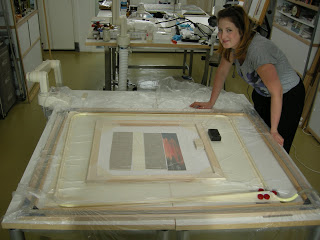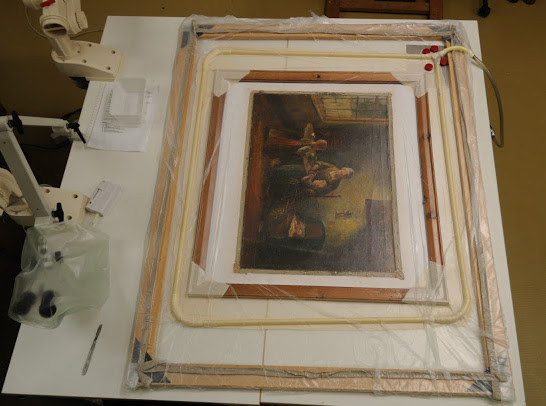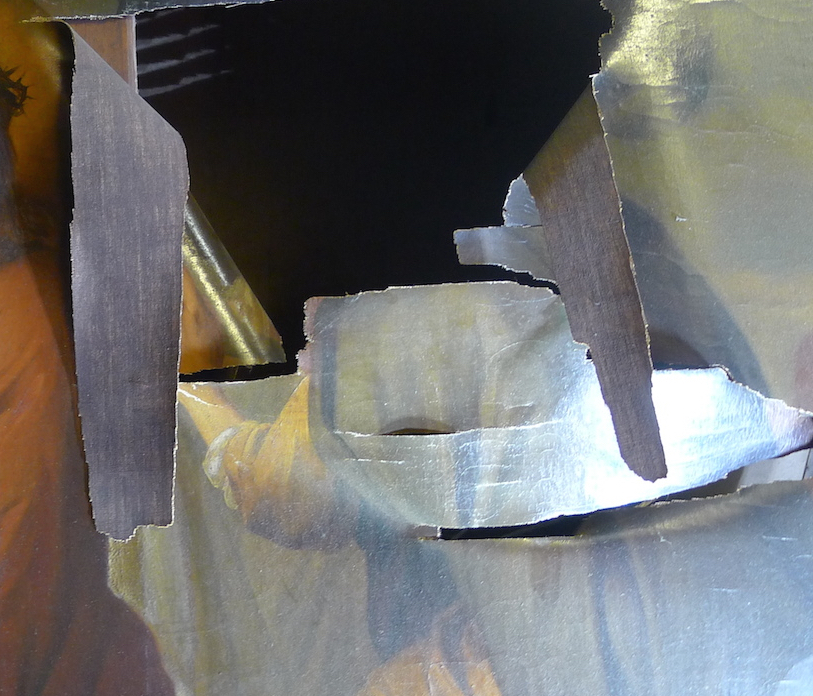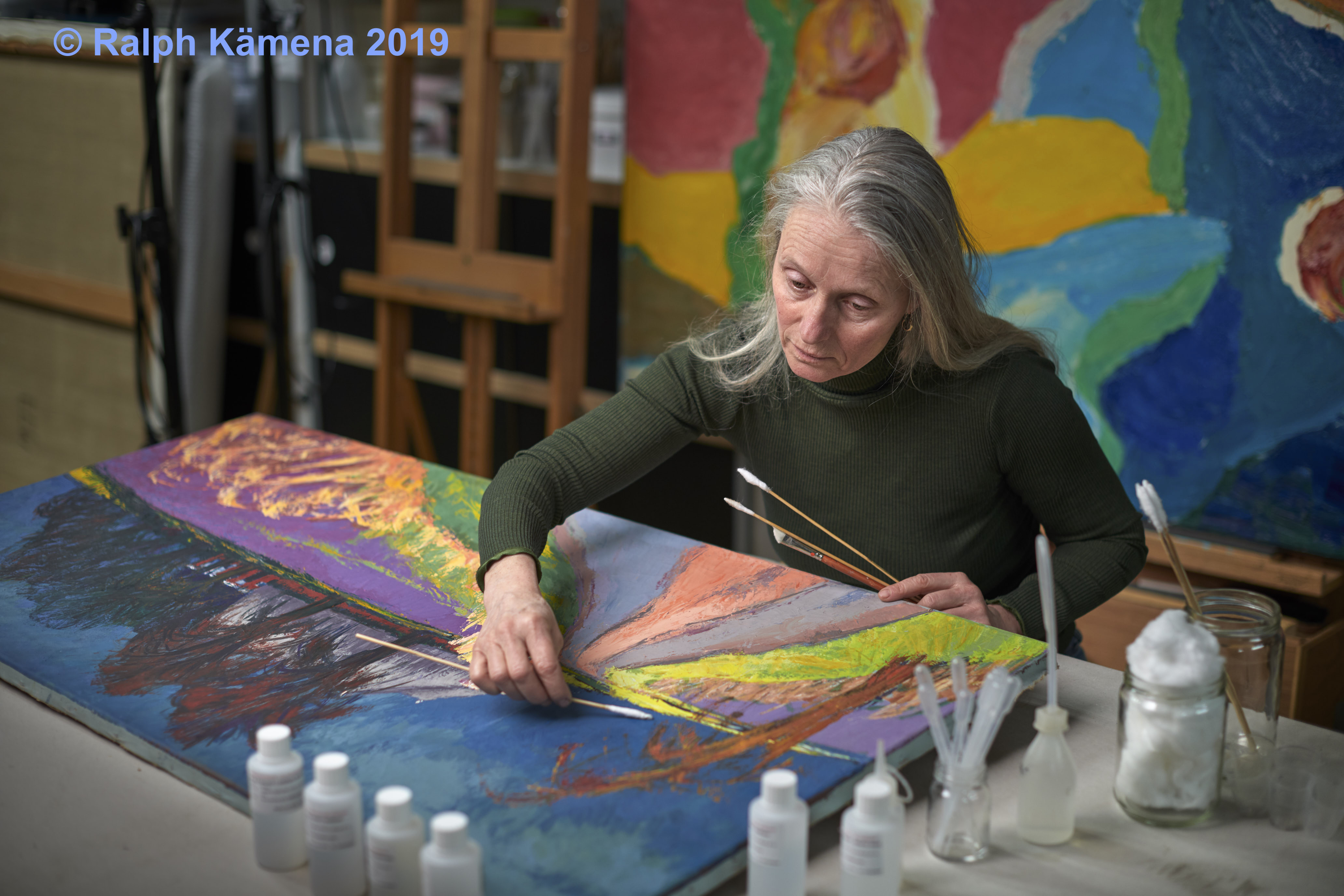When does one start covering a painting?

The term lining paintings stands for adding extra ‘textile support’ behind a painting. Of course only if the original carrier is too weak to support the paint layer. But also if the carrier is seriously damaged. When covering a painting, a second carrier is glued behind the textile. This can be done with a cold treatment or a warm treatment. Special restoration products are used for this
Mist lining
One of the cold treatments is called ‘mist lining’. A mist of glue is sprayed on the doublage canvas. This method provides minimal gluing and is primarily intended as support.
For more details see page mist lining for low pressure doublage
Strip lining
However, in lining paintings, there is also a strip lining. The conservator can apply strips along the tacking margins when they are damaged. But even when these are too short to re-tension the linen. Should this be necessary.
Lining; bedoeken en verdoeken
However, in the Dutch language there is a swich of term used for lining paintings called ‘bedoeken’. In the beging of the 20th century they used another term for adding a second canvas. They actually said removal of the original canvas and repace this for a new one and called it ‘verdoeken’. But this really means something else. Originaly this treatment has been done in the past. As the original canvas was replaced by a new canvas. Fortunately, this radical treatment is no longer used today. For the painting below, a lining will most likely be the only possible conseration and restoration option.










